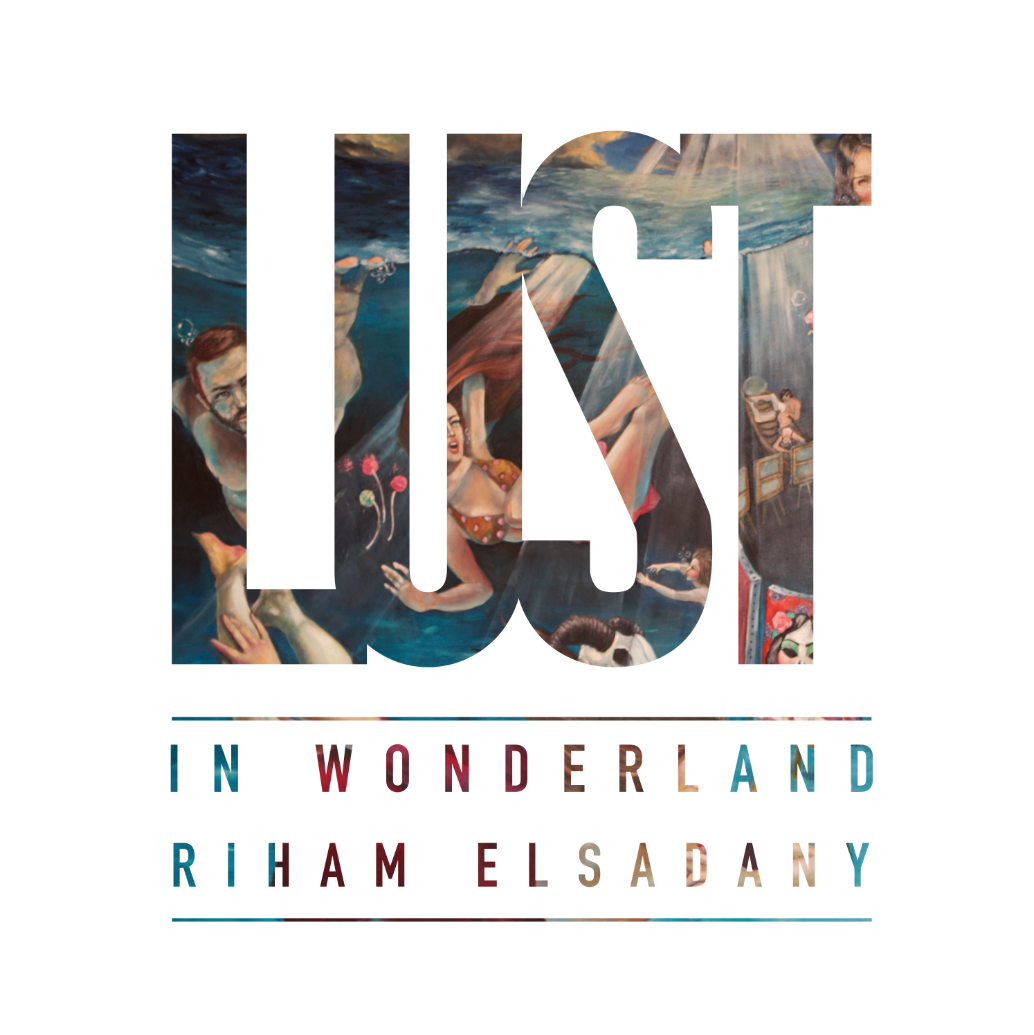
From Alice To Lust In Wonderland
“It is impossible,” muttered Alice. “Only if you believe it is” replied the Mad Hatter. A dialogue between Alice, the seven-year old key protagonist and one of the fantasy characters in ‘Alice in Wonderland’, the nineteenth century fairy tale by British author Lewis Caroll. The Mad Hatter could be multi-media Egyptian artist Riham ElSadany who has faith that nothing is impossible for women, even in rigid patriarchal societies. In her solo exhibition ‘Lust in Wonderland’ at ArtTalks Gallery in Cairo, ElSadany offers mental maps of imaginary territory, using non-sensical visuals to defy conventions and logical reasoning and reach a new kind of living sense. In her second solo exhibition at the gallery, imagination and fantasy rule in a fabricated world made for and by women. In this Wonderland, the artist explores the audacious belief that women could be free and hence daydreams of what these women would experience and how they would fantasize their lives. Riham ElSadany never paints reality. She paints a parallel fictional world where she indulges into dramatic, sensual delusion, masterly vacillating between the allowed and the forbidden; the real and the invented; the known that we try to escape from and the unconscious that we seek. She creates a multi-layered environment where women have an overwhelming desire to break free from chauvinistic taboos, discrimination, social expectations, imposed rules et al and delve into an environment where they can be. Through her visual constructions, ElSadany highlights the aspirations and vulnerabilities of women and like Alice; her protagonists find themselves in Wonderland. Replete with symbolism and rich in optical illusions and superimposed elements, her surrealist and anti-conformist oil paintings read like fairy tales.
In ‘(Im) Possibilities’, a 4-meter by 2-meter oil on canvas painting, ElSadany tells of a girl falling into an underwater fantasy world populated by other emancipated women, escaping reality and looking for answers. Does the underwater connote a pool of flooding tears and inner turbulence or is it a quiet sea symbolizing the search for the self and the comfort of finding inner peace? Who is this one imposing man amongst the many women? Alluding to ‘Alice in Wonderland’, ‘you,” he said, ‘are a terribly real thing in a terribly false world, and that, I believe, is why you are in so much pain.”
‘There Is A Place Like No Place On Earth’, a large autobiographical work, seems to be ElSadany’s way of suggesting maturity, adaptability and composure through motherhood – in other words the end of the fairy tale and the return to reality. A heart tying the veins of their hands bonds a mother and a daughter. Seated on French styled armchairs, their hands are reaching for one another but not yet touching. Their feet are in the (Nile) water with red fish surrounding the mother and none but one around the daughter’s feet. Cairo with its crowded buildings, its sixth of October Bridge and its two lions on Kasr el Nil bridge and Luxor with its row of sphinxes with rams’ head at the courtyard of the Temple of Seti II in Karnak lay in the background. Different means of transportation such as an airplane and a train are visible. Next to the mother is a wedding-like cake. Abundant symbols reinvent motherhood in a densely kitsch narrative where distances, separation and roots are insinuated and where Egypt, the artist’s homeland, is the emotional backbone.
In ‘Hidden Lollipop of Eve’ and ‘Interiors”, her women are depicted with horns such as the infamous deities found in many different religions across the world. One such example is Hathor, an ancient Egyptian goddess who personified the principles of joy and feminine love and who was commonly depicted as a cow goddess. In other works, the world is expressed via representations of food and appetite, encapsulating hunger for life and craving for absolute, non-negotiable independence. When looking at ElSadany’s entire body of work, one wonders whether she is a surrealist artist painting her dreams and wishes, or whether she is painting our own subconscious.
With a PhD in Performance Arts (2012) from the Fine Arts faculty in Cairo, ElSadany’s ability to fill a space with shrewd subconscious symbols and her references to Ancient Egypt are informed by her studies of human psychology and ancient Egyptian history. ElSadany’s work is part of the Egyptian Academy in Rome, the Egyptian Museum of modern art, the Bibliotheca Alexandrina and is displayed at the arrival hall of Cairo International Airport (14 works). Born in 1978, ElSadany lives and works between Egypt and the USA.